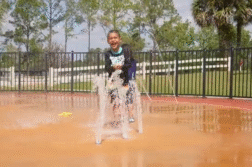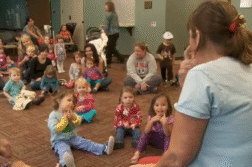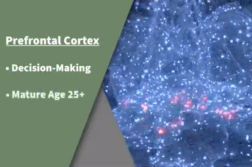ST. LOUIS, Mo. (Ivanhoe Newswire) — Soft-tissue sarcomas are cancers that begin in the muscles, tendons, blood vessels and tissue near joints. While this cancer can strike at any age, one form of sarcoma is especially cruel, as it most often strikes patients under ten. A new therapy is wiping out the cancer while protecting kids from life-long side effects.
Bridget Whiston has spent most of her days over the past year inside a Missouri hospital.
Bridget’s mom, Linda, told Ivanhoe, “Her stomach started blowing back up. It was hard. You knew there was something not right.”
Bridget was diagnosed with rhabdomyosarcoma, the most common soft-tissue cancer in kids. For Bridget, it started near her liver.
Stephanie Perkins, MD, a radiation oncologist at Washington University in St. Louis School of Medicine, explained, “It’s a challenge because the tumor is right next to her heart. It’s also a challenge because this area moves as we breathe.”
Chemo took the toddler’s hair, but also wiped out most of the tumor. For the remaining cancer cells, doctors used a cutting-edge radiation system called the MRIdian system by View Ray.
“If she takes in a deep breath and the tumor goes outside of the radiation field, the machine stops until the tumor returns back into the target,” continued Dr. Perkins.
This protects the healthy cells.
Bridget’s dad, Jason, said, “Anything that minimizes side effects, or an area of treatment that doesn’t need treatment, is huge.”
Doctors say there is every sign that, for Bridget, the precisely placed dose is working.
“There’s no sign of the tumor, so that’s wonderful,” said Linda.
The Whistons hope to leave hospitals behind for good, with no lasting signs of Bridget’s battle with childhood cancer.
Dr. Perkins said before the MRIdian, doctors would treat the sarcoma by plotting a radiation course with traditional x-ray machines. In addition, x-ray and CT scans also expose patients to additional radiation, which doctors are trying to avoid.
Contributors to this news report include: Cyndy McGrath, Supervising and Field Producer; Milvionne Chery, Assistant Producer; Tony D’Astoli, Editor; Brent Sucher, Videographer.
MEDICAL BREAKTHROUGHS
RESEARCH SUMMARY
TOPIC: MRIdian: Treating Childhood Sarcoma
REPORT: MB #4140
BACKGROUND: Sarcomas are cancers that develop from connective tissues in the body, such as muscles, fat, bones, the linings of joints, or blood vessels. Rhabdomyosarcoma (RMS) is a cancer made up of cells that normally develop into skeletal muscles. Seven weeks into the development of an embryo, cells called rhabdomyoblasts begin to form, and these are the cells that develop into RMS. Since this is a cancer of embryonal cells, it is much more common in children than adults. About 350 new cases of RMS occur each year in the United States. Most diagnoses are in children and teens, with more than half of patients less than 10 years old. Common sites of RMS include the head and neck, urinary and reproductive organs, arms and legs, and the chest and abdomen. The first symptom of rhabdomyosarcoma is the presence of a tumor which may cause a lump and swelling, as well as other signs. If RMS becomes more advanced, other symptoms such as lumps under the skin, bone pain, constant cough, weakness, or weight loss may occur.
(Source: http://www.cancer.org/cancer/rhabdomyosarcoma/detailedguide/index)
TREATMENT: The treatment and prognoses for patients with RMS depend on the type of RMS and on how much of it can be removed with surgery. Children with RMS are best treated in a cancer center where there is experience and expertise in treating childhood cancers. The types of treatment which may be used for RMS include surgery, chemotherapy, radiation therapy, and high-dose chemotherapy and stem cell transplant. If it can be done without causing major damage, most patients with RMS will be treated with surgery first to remove as much of the tumor as possible. Radiation is needed when any part of the tumor is left behind or if the cancer is harder to treat. Radiation therapy uses high-energy radiation to kill cancer cells, and is usually administered five days a week over many weeks. Using imaging tests such as MRI, the correct angles are chosen to ensure the aim is successful. Some smaller children may be given medicine to sleep before radiotherapy. Chemotherapy is often used in conjunction with treatments to ensure the cancer does not return.
(Source: http://www.cancer.org/cancer/rhabdomyosarcoma/detailedguide/rhabdomyosarcoma-treating-general-info)
NEW TECHNOLOGY: The MRIdian complete guided radiation therapy system is a new medical instrument that integrates full-time MRI imaging, radiation therapy delivery, and intelligent software automation. Using this system, clinicians can see soft tissue, visualize and adjust the dose, and fine-tune therapy all in real time without any other procedures, and without exposing the patient to unnecessary radiation. For childhood sarcomas in hard to treat areas, this means that surrounding tissue and organs will not be harmed by unnecessary radiation and the radiation will target the tumor more precisely.
(Source: http://www.viewray.com/system)
FOR MORE INFORMATION ON THIS REPORT, PLEASE CONTACT:
Judy Martin
Public Relations
314-286-0105
If this story or any other Ivanhoe story has impacted your life or prompted you or someone you know to seek or change treatments, please let us know by contacting Marjorie Bekaert Thomas at mthomas@ivanhoe.com




